MO Tested: Sena 20S EVO Motorcycle Bluetooth Communication System Review

A nice upgrade with a couple niggles
Way back in March of 2015 I reviewed the Sena 20S Motorcycle Bluetooth Communication System and found it to be my favorite of all the systems I’d ever sampled. I liked it so much that I bought a an extra mounting kit for it so that I could use it on my two favorite helmets, and when I wore something other than those two lids, I usually switched one of the mounts. In those two-plus years since the review, I’ve used the 20S on almost every single one of my motorcycle rides. It is an essential part of my motorcycle kit. That’s how much I’ve grown to love the Sena 20S. So, you can imagine how stoked I was when I received a pair of the upgraded Sena 20S EVO communicators.
Shop for the Sena 20S EVO here
Sena 20S Motorcycle Bluetooth Communication System Review
Before you read this review, I recommend you read the previous review (link above). Since the 20S EVO carries the same feature set, I won’t be repeating the description of all that the 20S and 20S EVO offer. Rather, I’ll be focusing on what’s changed with the addition of those three letters.
First, the unit itself looks mostly the same as the previous generation save for the shark fin that has sprouted off its top back edge. The fin has replaced the flip-up antenna that was used when communicating with other riders. Sena claims the EVO’s fin combines with the upgraded electronics to offer better range than the old setup. One other notable change to the form factor is slight-but-smart. The rubber plug for the micro-USB charging port now opens from the bottom, making rain that runs down the back of the unit less likely to enter the port. Very clever. The final physical change I noticed was the inclusion of a new twist-on locking mechanism for the microphone plug. The rest of the Sena 20S EVO kit remains the same from the speakers to the mounting brackets and their ports.
Although the 20S EVO would work with my old mount, I tested it on a completely new installation. The mounting bracket slips between the helmet shell and the EPS liner while speakers fit just like they did in my previous review. Pairing the EVO to my iPhone was as simple as holding a button down for six seconds. After that initial pairing exercise, the EVO and my iPhone linked up within a second or two of the Sena powering on. The older 20S took from 10–15 seconds to connect after powering up. No, this isn’t a huge deal, but it is noticeable when used every day.
Although Sena says the noise reduction microphone is unchanged, people I talked to said that the EVO’s noise attenuation worked slightly better than with my previous unit. (Perhaps the old mic was wearing out after two years of use and being switched between helmets several times – something the average user is not too likely to do.) The old system had begun to occasionally reduce the volume of my voice, making it difficult to hear. The EVO maintains a good level of noise reduction regardless of speed I’m traveling.
In testing the Bluetooth rider-to-rider communication, I’d say that, in the environment that we ride in, the range was increased by about 10–15%. Out on the open highway, the range is respectable but not the mile-plus distances Sena claims. On a winding mountain road, the range is further than line-of-sight, extending to a couple corners ahead before the connection drops. When on the ragged edge of service, static can begin to break up words. Still, in the type of group riding I do, I found the range to be good. Since I only had two 20S EVOs, I was unable to test the units with a large group on the same hardware. The communication issues we’ve heard about from readers stem from the way multiple Bluetooth headsets are linked to each other, and consequently, I suspect that there will be no change with the EVO. (Sena says that the upcoming 30K with its mesh networking will remedy the problem.)
For me, however, my daily use of the 20S EVO is primarily solo riding and communicating with my phone – mostly listening to directions. In this regard, there is one unwelcome change that I have noticed with the Sena 20S EVO. I’ve frequently written about how I use earphones that seal out the outside noise when I’m riding. Although the EVO’s speakers are great for around town and can overpower wind noise when they are mounted so that they are almost touching my ears, I find it stressful to have the speakers essentially shout over the wind noise of highway-speed travel. So, I use Etymotic mk5 Isolator Earphones which act as my earplugs and protect my hearing. They also allow me to listen to directions at very low volumes since the wind buffeting is sealed out of my ear canal.
Now we get to the unwelcome change: When I’m wearing my earphones, I can hear a low-level whine whenever the 20S EVO connects to my iPhone. (Associate Editor Ryan Adams has noticed the same issue with his Android phone on his 20S EVO when he is wearing headphones, too.) While I can’t hear the whine from the helmet speakers, the sound is noticeable enough with headphones that I know that Siri is about to give me directions about a second before she does. I don’t notice the sound when playing music – except between songs. Similarly, it doesn’t interfere with phone conversations, but I can hear it during pauses in a call. My old 20S didn’t have this issue. While it’s not a deal-killer for me, it is a bummer for a niggle like this to appear in such a quality product.
A similar bummer is the fact that the Ambient function of the EVO isn’t as sensitive as the one on my old 20S. The Ambient function turns on an external microphone on the unit and amplifies the sounds through the helmet speakers/earphones, making conversations at gas stops much easier. On the EVO, I have to turn the volume up much louder to be able to carry on a conversation with my earphones in place. Again, not a huge deal but still one that bears mentioning.
So, with the 20S EVO, Sena has produced a mostly solid upgrade to its former top-of-the-line communicator the 20S. If you’re a 20S owner, I don’t think that the changes to the system are worth the cost of upgrading. However, if you’ve been looking at the 20S but haven’t bought one yet, this would be a good upgrade to pull the trigger on – with one caveat. If you’re easily bothered by whines or buzzes – no matter how slight – you should buy the 20S EVO from a place with a liberal return policy in case you can’t tolerate the buzz I mentioned. The other issue to consider is a problem with all evolving technology. Sena has the 30K slated for release in the next few months, and the company has claimed its mesh communication technology has eliminated the group chat issues that riders have had when riding in large groups. Do you buy now or wait for the next generation that is just around the corner?
The Sena 20S EVO is available now for a single unit price of $299 and a pre-paired dual pack for $549.
Shop for the Sena 20S EVO here
We are committed to finding, researching, and recommending the best products. We earn commissions from purchases you make using the retail links in our product reviews. Learn more about how this works.

Like most of the best happenings in his life, Evans stumbled into his motojournalism career. While on his way to a planned life in academia, he applied for a job at a motorcycle magazine, thinking he’d get the opportunity to write some freelance articles. Instead, he was offered a full-time job in which he discovered he could actually get paid to ride other people’s motorcycles – and he’s never looked back. Over the 25 years he’s been in the motorcycle industry, Evans has written two books, 101 Sportbike Performance Projects and How to Modify Your Metric Cruiser, and has ridden just about every production motorcycle manufactured. Evans has a deep love of motorcycles and believes they are a force for good in the world.
More by Evans Brasfield



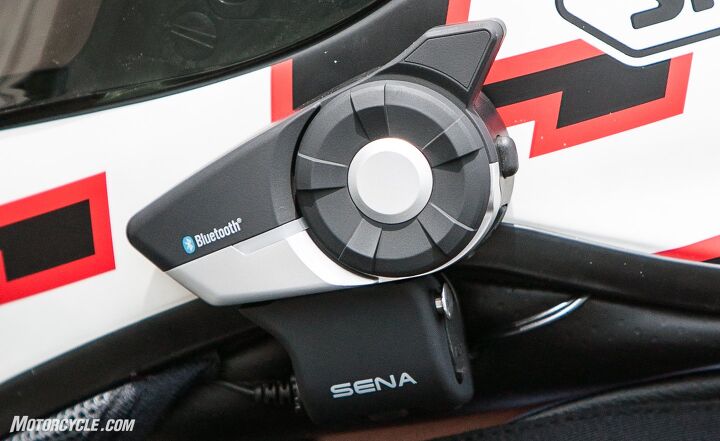
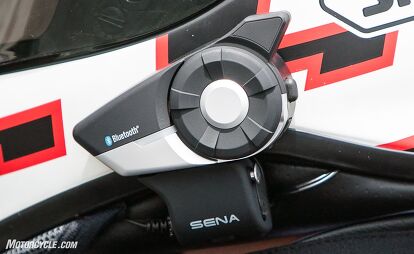













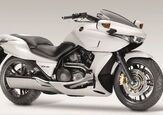


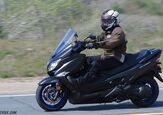


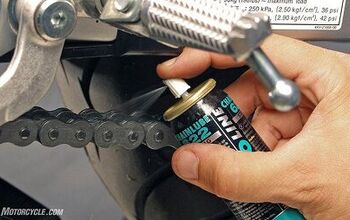






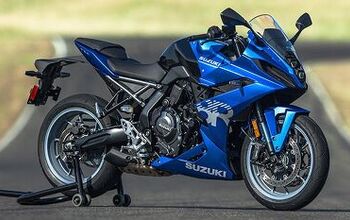






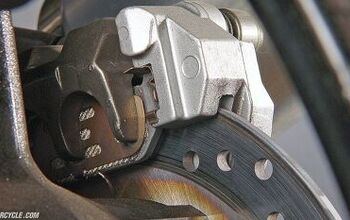


Comments
Join the conversation
I'm in the UK I bought the 20s and found it to be absolutely RUBBISH. I gave up trying to get assistance from SENA. If I had only paid half the money I did it still would have been too much!
Voice activation at 86mph drove me insane with 'say a command' x3 then 'cancel,
Would not recognise any voice commands
Volume is too low to hear talking radio stations
You have to remember to turn volume up full whack to her music, and low to stop being deafened by ring tone,
I paired with a Tom Tom Zumo, min vol on both units was so loud that it was dangerous.
FM Radio would not stay on a station,
The ambient noise button on the bottom kept getting pushed by my waterproof jacket and it refused to cancel with me switching off/on
It is impossible to know what charge is left, low battery warning gives about 15secs warning.
It was very difficult to control with waterproof gloves, so 10 out of 12 months!
In short, I disconnected from the TomTom, and only used for music, I also disconnected the microphone. When the cable to the ear speakers failed a few months ago it was the last straw and I pulled the whole lot off. This was after 20,000miles over 28 or so months, not a worthy investment for the UK
I've been using the Sena 20S's for 2 years now. I have 2 dual sets of the 20S, a Harley Freewire, Goldwing Freewire, their Prism camera, and 4 of their wall chargers.
I purchased my first dual set of 20S's from eBay. After using it twice, one of the units failed. It would no longer charge nor turn on. Reset didn't do anything either. Dead!
Sena refused to honor their warranty on this unit because I had purchased it on eBay! I had registered it, and updated it. It had a Sena serial number, but Sena wouldn't honor their 2 year warranty! Mind you the seller was an authorized Sena motorcycle dealer! (They worked with me an got me a new unit through the store. I would like to give them a shout out, but they have since sold the dealership and it has moved with new owners).
I then had both of the first dual set mounts break. They had a black plastic catch that failed. Again Sena was no help at all and I went through my dealer and received 2 new ones. (This time with silver metal catches). Sena's quality was just crap. I'm afraid to mount and dismount them now! The supplied speakers are junk too. After just one year their sound quality was so bad I replaced all 4 units with iAsus x Sound 3 speakers. I lost the FM radio ability, but so what? It never worked anyway! The quality of sound improved 100%!
Sean's customer service is an icon on how NOT to treat your customers. They never respond to questions/quarries on warranty. They don't seem to give a damn about their customer base. Just try to find a "Contact Us" on their web site!
Because of this terrible service from Sena's customer non-service, I've moved on to Cardo's JBL Packtalk Bold's. I can't say enough about the jump in quality, and ease of use! Voice commands work perfectly! They are 100% waterproof. Their battery charge last twice as long. You don't have the terrible "jog dial" always screwing up your settings when you do anything near it like opening your face shield. The sound from the JBL speaker is as good as or better than the iAsus speakers, and you don't have to pay an extra $100 to get it! The FM radio works flawlessly! (I can get my local FM Rock station from 60 miles away. Just as in my truck)! They also pair with my Freewire's and Prism camera. (That did take some experimenting and playing with though).
Sena is a junk company. I highly recommend you pass on their over priced and under supported products. Give the Cardo's a try. The MESH intercom and JBL speakers are worth the money.